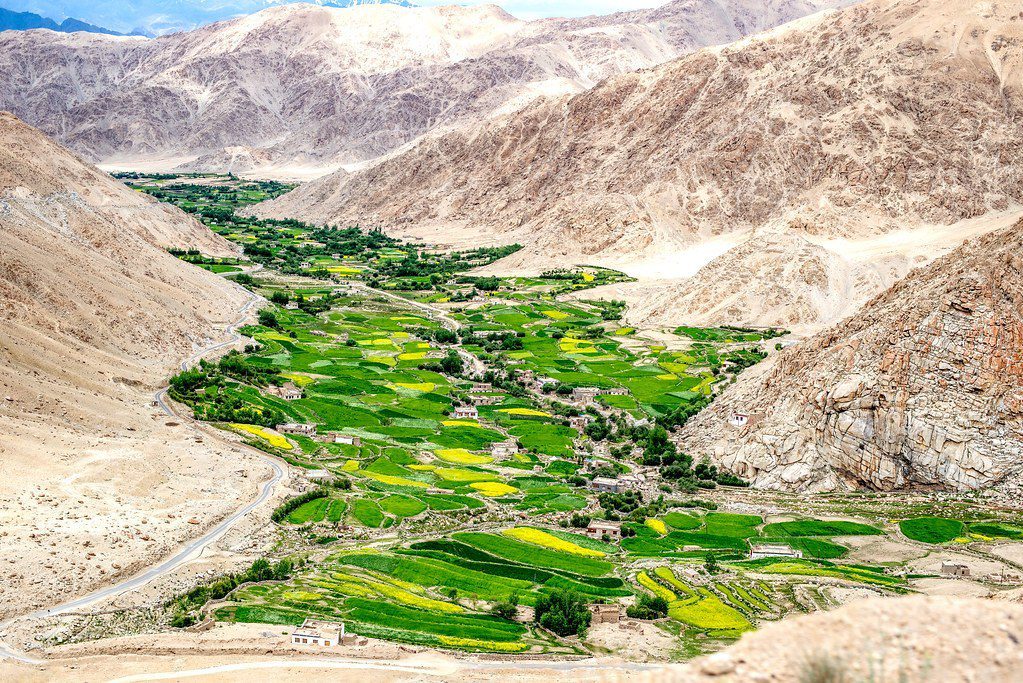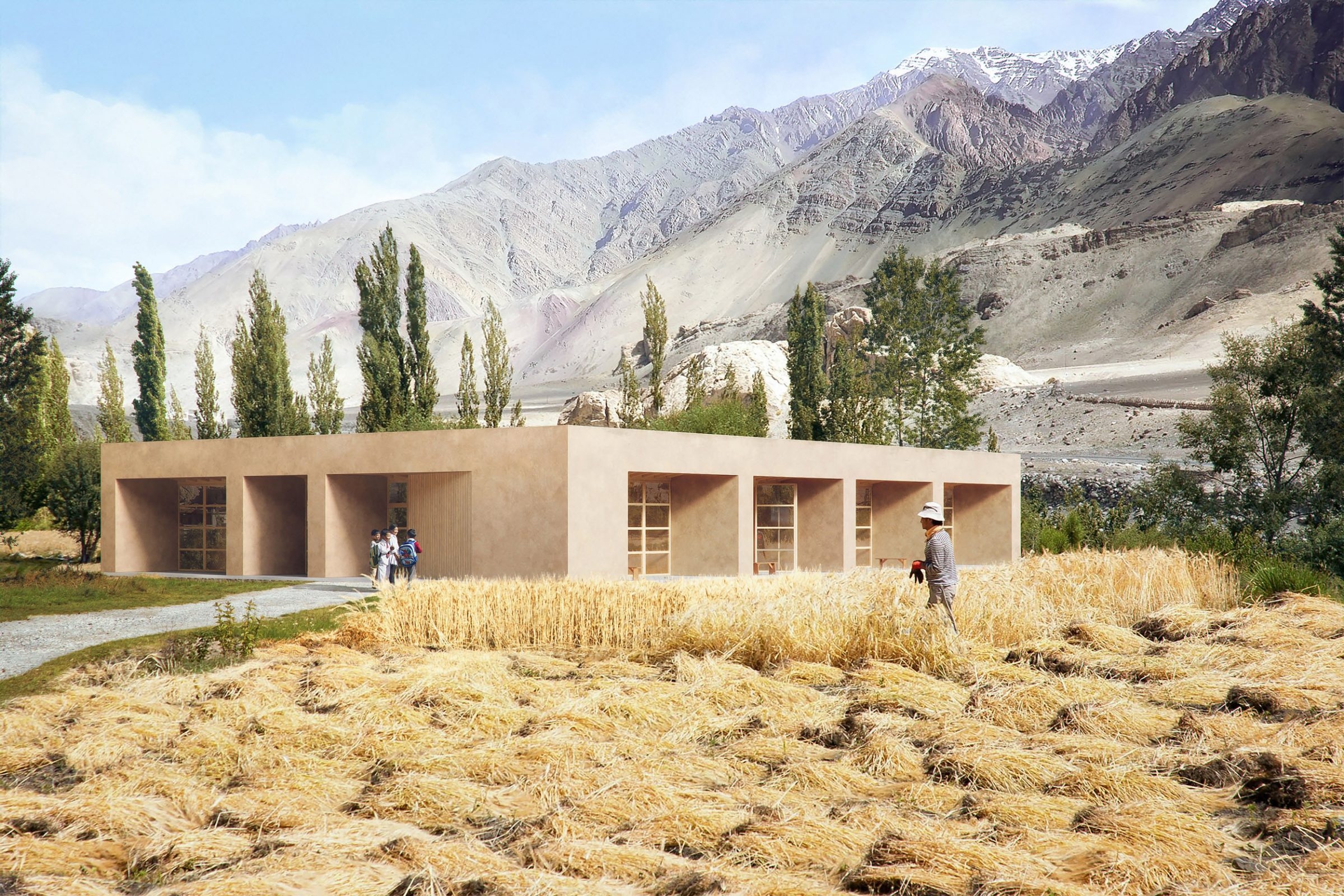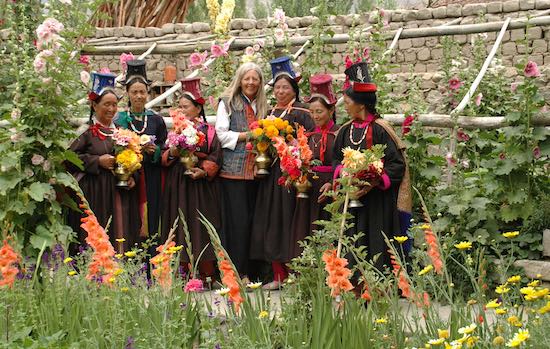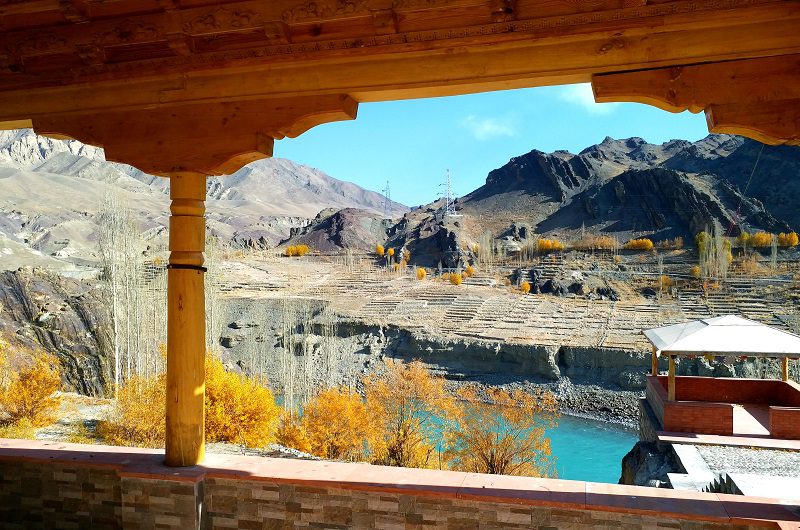Ladakh, with its awe-inspiring landscapes, cultural richness, and distinct ecosystems, has become a bucket-list destination for many travelers. But as tourism grows in this fragile, high-altitude region, so does the need for responsible, sustainable practices. Eco-friendly travel in Ladakh allows you to enjoy its beauty without compromising its environment or the well-being of its communities. This guide will show you how to explore Ladakh responsibly, leaving a positive impact on the land and its people.
Introduction to Eco-Friendly Travel in Ladakh
Why Eco-Friendly Travel Matters in Ladakh’s Unique Ecosystem
Ladakh’s location in the Himalayas makes it vulnerable to environmental changes. The increasing influx of tourists puts pressure on the region’s limited resources, including water, energy, and waste management systems. Practicing eco-friendly travel helps minimize your impact on Ladakh’s fragile ecosystem.
Overview of Responsible and Sustainable Tourism in Ladakh
Sustainable tourism in Ladakh focuses on minimizing environmental damage, preserving the local culture, and supporting Ladakhi communities. Whether it’s choosing eco-friendly transportation, reducing waste, or respecting cultural traditions, responsible tourism allows visitors to contribute positively to Ladakh.

Preparing for a Responsible Trip to Ladakh
How to Pack Eco-Consciously for Ladakh’s Climate and Terrain
Packing responsibly means bringing items that reduce waste and avoid single-use plastics. Consider these essentials:
- Reusable water bottle with a built-in filter for clean drinking water.
- Biodegradable soap and shampoo to prevent pollution in streams and rivers.
- Sturdy tote bag for shopping to avoid plastic bags.
- Quick-dry, natural fabrics suitable for Ladakh’s cold and dry climate.
“Packing a reusable water bottle with a filter was a game-changer. I didn’t buy a single plastic bottle throughout my trip!” – David L., Eco Consultant from Australia
Choosing Eco-Friendly Transport Options to Ladakh
Getting to Ladakh sustainably may be a challenge, but you can minimize your footprint by choosing public transportation or carpooling when possible. Opt for group tours that use eco-friendly transport to reduce your carbon footprint. Once in Ladakh, rent bicycles or walk for shorter trips to experience the region’s beauty up close and sustainably.
Staying in Eco-Friendly Accommodations in Ladakh
Top Eco-Friendly Accommodation Options in Ladakh
Many accommodations in Ladakh have adopted eco-friendly practices, including using solar energy, conserving water, and managing waste sustainably. Choose from eco-lodges, homestays, or hotels that practice environmentally responsible initiatives.
| Eco-Friendly Accommodation |
Location |
Description |
| Ladakh Sarai |
Leh |
Solar-powered lodge offering composting toilets and community engagement programs. |
| Nimmu House |
Nimmu |
Restored traditional house with a focus on local culture and sustainable practices. |
| Raku House |
Leh |
Eco-conscious homestay utilizing water-saving practices and offering traditional experiences. |
“Staying at Nimmu House felt authentic and eco-conscious. They provided local meals, and I loved knowing my stay helped the community.” – Sophia T., Writer from Canada
Supporting Local Lodges and Homestays to Benefit Ladakhi Communities
By choosing local homestays and family-run lodges, you support the economy directly and help preserve Ladakh’s unique heritage. Many local hosts invest earnings back into sustainable practices and cultural preservation.

Minimizing Your Environmental Impact in Ladakh
Tips for Reducing Waste During Your Ladakh Trip
Waste management is challenging in Ladakh due to limited infrastructure, so minimizing waste is crucial:
- Avoid plastic packaging: Carry reusable bags and buy locally-made products.
- Refuse single-use items: Bring your own cutlery and straw.
- Dispose of waste responsibly: If trash bins are unavailable, take your waste with you until you find proper disposal.
“Using a small reusable bag for my shopping helped me avoid plastic. The locals appreciated it too!” – Carla M., Teacher from Brazil
Water Conservation Tips for Ladakh Travelers
With limited water resources, it’s essential to conserve water. Here’s how:
- Short showers and reusing towels can save gallons.
- Bring a reusable bottle to avoid bottled water, and choose accommodations with efficient water systems.
- Avoid washing clothes frequently, and if needed, choose places that have eco-friendly laundry options.
“Ladakh’s water scarcity was eye-opening. I was more mindful of my water use and showered only when necessary.” – Rajiv S., Engineer from India
Eco-Friendly Activities to Try in Ladakh
Exploring Ladakh Through Low-Impact Trekking and Hiking
Ladakh offers many trekking routes that don’t require heavy infrastructure, making them eco-friendly choices. Look for less-traveled routes to minimize impact on popular trails, and choose local guides to support community-based tourism.
Tip: Always stay on marked trails to prevent erosion and protect local plant life.
Participating in Responsible Wildlife Watching and Nature Activities
Ladakh is home to diverse wildlife, including the elusive snow leopard. For ethical wildlife viewing:
- Observe from a distance to avoid disturbing animals.
- Choose certified local guides for wildlife tours to ensure ethical practices.
- Avoid loud noises and flash photography that may distress animals.
“Watching wildlife in Ladakh respectfully was an incredible experience. The local guide taught us a lot about animal habitats.” – Lily K., Wildlife Photographer from the United Kingdom
Visiting Cultural Sites with Respect and Sensitivity
When visiting monasteries and cultural sites, follow respectful dress codes and avoid loud behavior. Many sites have signs explaining proper etiquette – be mindful and observant.
Tip: Seek permission before taking photographs of people or sacred sites to respect local customs.

Supporting Local Culture and Economy Responsibly
Buying Locally Made Products and Souvenirs
Shopping local in Ladakh supports artisans and reduces the carbon footprint of imported goods. Look for handmade textiles, traditional jewelry, and pottery. Avoid items made from endangered plants or animals, as these contribute to environmental degradation.
“Buying local souvenirs felt meaningful, and the artisans shared beautiful stories about each piece.” – Andrea F., Designer from Italy
Eating at Sustainable Restaurants and Supporting Local Cuisine
Opt for restaurants that serve locally sourced food to reduce your carbon footprint. Traditional Ladakhi food such as thukpa (noodle soup) and momos (dumplings) use local ingredients and minimize imported produce.
Tip: Dining in smaller, family-owned restaurants also supports local livelihoods directly.
Following Leave No Trace Principles in Ladakh
Understanding and Practicing Leave No Trace in Ladakh
The Leave No Trace principles focus on leaving natural spaces undisturbed. This means cleaning up after yourself, respecting wildlife, and minimizing your physical impact on trails.
Tip: Carry a small trash bag to pack out any waste and help keep Ladakh pristine.
Protecting Ladakh’s Natural Beauty by Leaving It as You Found It
Take only photos and memories, and leave rocks, plants, and artifacts in their natural places. This simple practice protects Ladakh’s natural and cultural beauty for future generations.
“Practicing Leave No Trace in Ladakh made me appreciate its untouched beauty even more.” – Michael J., Architect from the USA
Conclusion – How to Leave a Positive Impact on Ladakh
Traveling responsibly in Ladakh means embracing sustainable practices and making mindful choices that preserve Ladakh’s environment and culture. From packing eco-consciously to supporting local communities and following Leave No Trace principles, every small action counts toward making Ladakh a better place for both travelers and locals.
By following these eco-friendly travel tips, you can enjoy Ladakh’s incredible beauty and ensure it remains a pristine destination for years to come. Visiting Ladakh responsibly isn’t just about reducing your environmental footprint—it’s a way to show respect for the land and its people.

FAQs about Eco-Friendly Travel in Ladakh
Q: How can I reduce my plastic use in Ladakh?
A: Bring a reusable water bottle, avoid single-use plastics, and use a reusable shopping bag.
Q: Are there eco-friendly places to stay in Ladakh?
A: Yes, Ladakh has many eco-conscious accommodations, including Ladakh Sarai and Nimmu House.
Q: What should I pack for an eco-friendly trip to Ladakh?
A: Essentials include reusable items, biodegradable toiletries, and a refillable water bottle with a filter.
Q: How can I support local communities while traveling in Ladakh?
A: Stay in local homestays, buy locally made products, and hire local guides.
Q: Why is water conservation important in Ladakh?
A: Ladakh has limited water resources, making conservation essential for residents and visitors alike.
Q: What are Leave No Trace principles, and how can I follow them in Ladakh?
A: Leave No Trace principles involve minimizing your environmental impact by taking waste with you and respecting natural areas.
eco-friendly travel Ladakh
eco-friendly travel Ladakh | The journey through Ladakh mirrors the very essence of unraveling unknown horizons, as its dramatic landscapes and unique cultural identity awaken the deepest sense of wonder and exploration. eco-friendly travel Ladakh delves into this realm where inner peace intertwines with the wild, untouched beauty of Ladakh. From the snow-capped peaks to the serene monasteries, every step in Ladakh is a step toward self-discovery. The mountains, ancient paths, and unspoken mysteries stretch before travelers, offering a meditative experience where each encounter feels both effortless and transformative. Whether it’s trekking across remote valleys or sitting quietly beside a sacred lake, Ladakh invites those who seek a deeper connection to the natural and spiritual world.

eco-friendly travel Ladakh
The monasteries of Ladakh stand as living monuments to the region’s profound spiritual heritage. With origins dating back over a thousand years, these ancient structures are both places of worship and repositories of art, culture, and wisdom. Hemis Monastery, one of the largest in Ladakh, is renowned for its annual festival, featuring colorful mask dances performed by monks. The history of these monasteries reflects Ladakh’s role as a crossroads between India, Tibet, and Central Asia, where religious and cultural influences have intertwined over the centuries.
The Tibetan Buddhist influence is especially evident in the architecture and daily life of the monks. Prayer wheels, intricate murals, and the soft hum of chants fill the air as visitors explore the monastery grounds. Each monastery, from the remote Lamayuru to the awe-inspiring Thiksey, offers a window into the spiritual heart of Ladakh. These centers of meditation, learning, and community life continue to thrive, preserving traditions that have shaped Ladakh for generations.
Why Visit Ladakh for eco-friendly travel Ladakh?
Ladakh is a destination that transcends mere travel. It offers a journey that touches both the outer and inner landscapes, making it a perfect setting for those who seek to unravel their own unknown horizons. The region’s breathtaking scenery—from towering mountain ranges to hidden valleys—provides not just an escape but a space for contemplation and growth. Ladakh’s culture, deeply rooted in Buddhist practices, invites visitors to reflect on their own lives and the world around them.
Ladakh’s people, known for their warmth and hospitality, add to the richness of the experience. Villages like Sumda Chun and the legendary Nubra Valley introduce travelers to a way of life that is intricately connected to nature and spirituality. Staying in local homestays allows for immersive experiences where one can learn about traditional Ladakhi customs, share meals made from local produce, and participate in community rituals.

Beyond its natural beauty, Ladakh offers a unique opportunity to explore oneself. The vastness of the region’s plateaus and the clarity of its skies seem to mirror the vastness of the human spirit. Whether it’s standing atop a mountain pass at 18,000 feet or meditating in a centuries-old monastery, Ladakh helps unravel the unknown horizons within each traveler.
Finding the Best eco-friendly travel Ladakh in Ladakh
Finding the best places in Ladakh to experience “eco-friendly travel Ladakh” involves venturing off the beaten path. Ladakh’s lesser-known treks, such as those leading to secluded monasteries or high-altitude lakes, offer unparalleled opportunities for solitude and reflection. The Markha Valley trek, for instance, takes travelers through verdant valleys, ancient villages, and high-altitude passes, allowing for both physical and spiritual exploration.
Ladakh’s iconic lakes, including Pangong Tso and Tso Moriri, are ideal spots for quiet contemplation. Their still waters reflect the sky, creating a mesmerizing landscape that feels timeless and infinite. Sitting beside these lakes, especially at dawn or dusk, brings an overwhelming sense of peace and connection with nature.

For those interested in Ladakh’s spiritual heritage, exploring monasteries such as Alchi, Phyang, or Diskit can be a transformative experience. These sites are not just places of worship but also centers of art, philosophy, and wisdom. Visiting these monasteries, with their ancient murals and intricate statues, offers insight into Ladakh’s rich cultural tapestry.
Ladakh’s Atmosphere and eco-friendly travel Ladakh
Ladakh’s atmosphere is unlike any other place on Earth. The stark contrasts between the rugged mountains and the serene, tranquil monasteries create an environment that feels both raw and sacred. The traditional decor in Ladakhi homes and religious sites reflects this balance, with mud-brick houses adorned with prayer flags and colorful thangkas (Buddhist paintings) that add warmth and spiritual meaning to the space.

The interiors of Ladakhi homes, often simple and functional, are filled with symbols of devotion. Small shrines dedicated to Buddhist deities are common, and the air is often fragrant with incense. The use of earthy materials, like stone and wood, along with brightly colored textiles, creates an inviting and peaceful space, perfect for relaxation and reflection.
Traditional Ladakhi Cuisine
Traditional Ladakhi cuisine is an integral part of the region’s identity, offering a unique blend of flavors that reflect its harsh climate and remote location. Hearty, warming dishes such as thukpa (noodle soup) and momos (dumplings) provide the sustenance needed to endure Ladakh’s cold temperatures. Skyu, a thick stew made with root vegetables and barley, is another staple of the Ladakhi diet, designed to nourish both body and spirit.

Drinks like butter tea, made with yak butter and salt, are a must-try for anyone visiting Ladakh. This rich, savory drink is not only warming but also hydrating, making it essential for those venturing into the high-altitude regions of Ladakh. Chang, a local barley beer, is often enjoyed during festivals and community gatherings, adding a sense of joy and camaraderie to any occasion.
Live Cultural eco-friendly travel Ladakh in Ladakh
Ladakh is home to a vibrant cultural scene, with festivals and live performances held throughout the year. The Hemis Festival, which celebrates the birth of Guru Padmasambhava, is one of the largest and most famous events in the region. Monks dressed in elaborate costumes perform cham dances, which depict the triumph of good over evil. The energy of the festival, with its bright colors, rhythmic music, and elaborate rituals, draws visitors from around the world.
Other local festivals, such as the Losar (New Year) and Ladakh Festival, provide visitors with the chance to witness traditional dance, music, and crafts that have been passed down through generations. These events are more than just entertainment; they are a celebration of Ladakh’s rich cultural heritage and its deep connection to the spiritual world.
Trekking and Outdoor Activities eco-friendly travel Ladakh
Ladakh is a trekker’s paradise, offering some of the most stunning and challenging routes in the world. From the famous eco-friendly travel Ladakh, which follows the frozen Zanskar River, to lesser-known routes like the Sham Valley or Nubra Valley treks, Ladakh’s landscape offers endless possibilities for adventure and discovery. The high-altitude passes, such as Khardung La and Chang La, offer breathtaking views of snow-capped peaks and sprawling valleys.

Wildlife enthusiasts will also find eco-friendly travel Ladakh to be a haven for rare species such as the snow leopard, Himalayan blue sheep, and the Tibetan wild ass. Winter expeditions to spot the elusive snow leopard in the Hemis National Park are gaining popularity among wildlife photographers and conservationists alike.
The Importance of Preserving Ladakh’s eco-friendly travel Ladakh
Ladakh’s rich cultural and environmental eco-friendly travel Ladakh is under increasing threat from climate change and mass tourism. Preserving this unique region requires careful attention to sustainable tourism practices. Choosing eco-friendly accommodations, supporting local businesses, and participating in community-led conservation efforts are just a few ways that visitors can contribute to the preservation of Ladakh’s natural and cultural heritage.
Ladakh’s people have a long history of living in harmony with their environment, practicing sustainable agriculture, and maintaining a deep spiritual connection to the land. Visitors are encouraged to follow the same principles, leaving no trace and respecting the fragile ecosystems that make Ladakh so special.
Etiquette and Tips for Visiting eco-friendly travel Ladakh
Before visiting Ladakh, it’s essential to understand and respect the region’s customs and traditions. As a deeply spiritual place, Ladakh requires visitors to dress modestly, especially when visiting monasteries or attending religious ceremonies. Always ask for permission before taking photographs inside monasteries or of local people.
Medical eco-friendly travel Ladakh
Spa trail eco-friendly travel Ladakh
eco-friendly travel Ladakh

When eco-friendly travel Ladakh, remember to stay on designated paths to avoid damaging fragile ecosystems. Tipping is appreciated but not expected in most settings, and it’s important to carry cash, as many remote areas do not accept credit cards. Lastly, be mindful of altitude sickness and take the necessary precautions when traveling to higher elevations.
Conclusion: Enjoying eco-friendly travel Ladakh in Ladakh
Ladakh is a place where the physical and spiritual worlds converge, offering travelers a journey unlike any other. Whether you’re trekking across high-altitude deserts, exploring ancient monasteries, or simply sitting in quiet reflection by a mountain lake, Ladakh invites you to unravel your own unknown horizons. By respecting the region’s traditions and practicing sustainable tourism, you help ensure that Ladakh’s beauty and cultural richness will be preserved for future generations to explore and enjoy.












